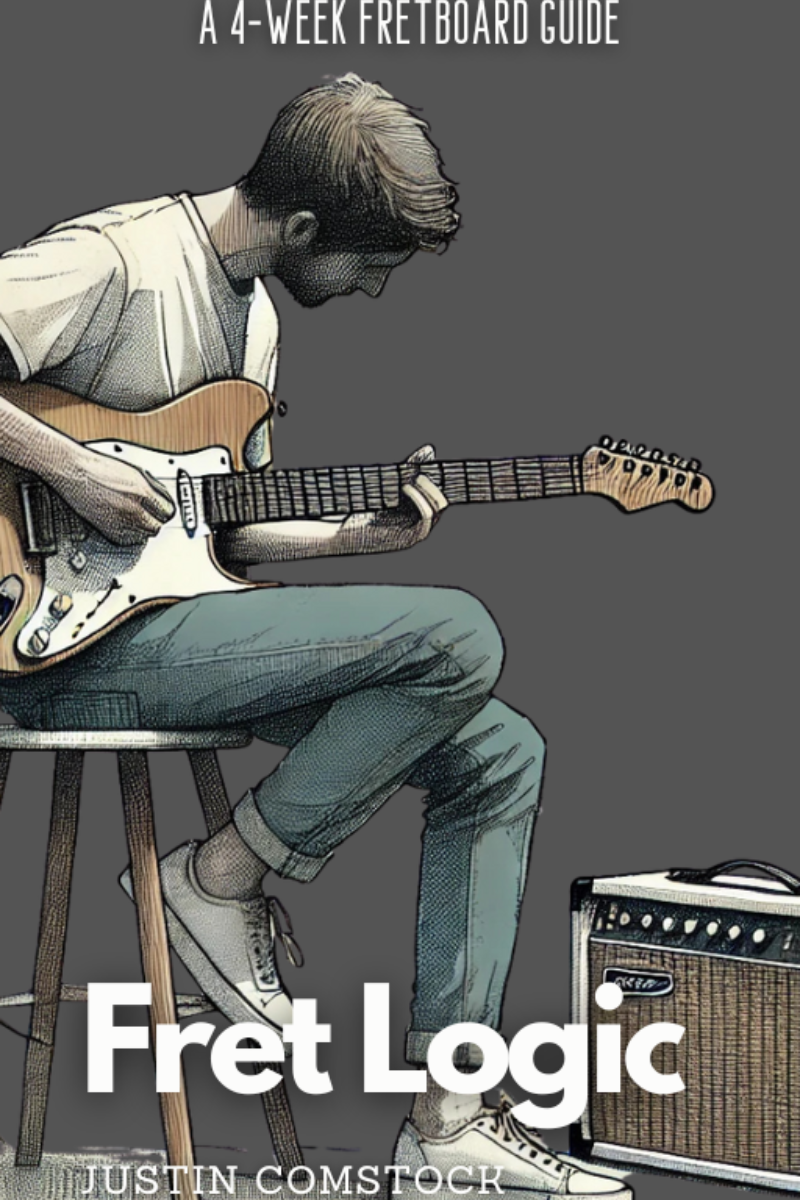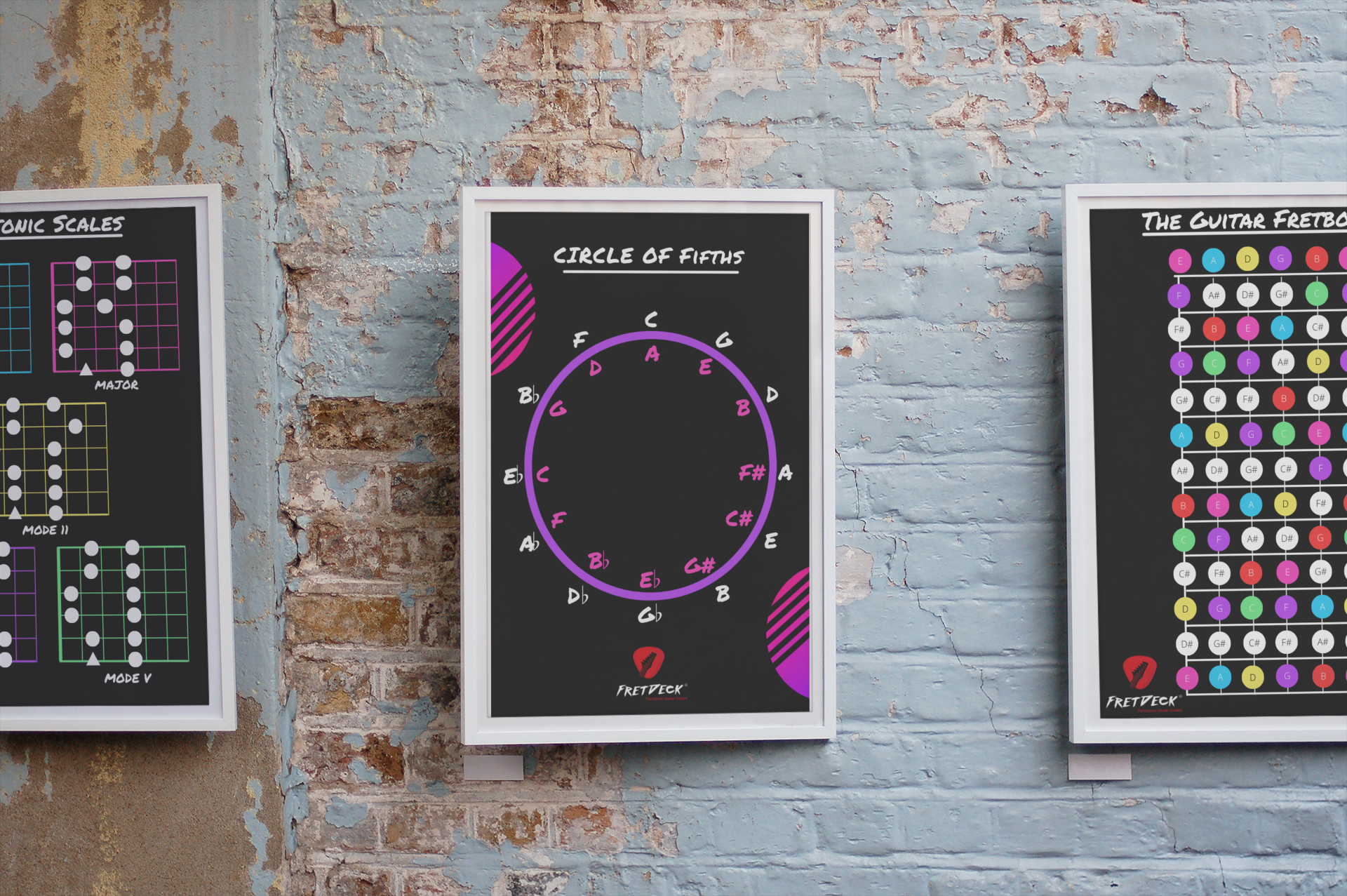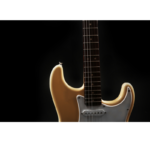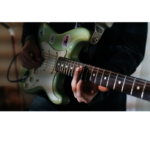If you’re still stuck in the same open chord shapes or bouncing between a handful of barre chords, it’s time for a mindset shift.
The CAGED guitar system isn’t just a theory hack—it’s the fretboard framework pros use to command every chord, every voicing, anywhere on the neck.
In this guide, you’ll learn how to:
- Unlock the five CAGED shapes and how they connect
- Build chord inversions and expand progressions
- Visualize the fretboard like a pro
- Practice smarter (not harder)
- Use FretDeck™ and our Discord community to accelerate mastery
And by the end? You’ll stop guessing—and start owning the fretboard.

❌ Stop Guessing. Start Shredding.
If you’re still fumbling through scale patterns and box shapes… it’s costing you progress.
FretDeck™ is the no-fluff system that shows you exactly how to master the fretboard—fast. Early access.
⚡️ This isn’t for dabblers. It’s for players who want results.
👉 Click here to join the pre-launch now
Early access. Limited rewards. Don’t wait.
❌ Still Guessing Your Way Around the Neck?
🎯 Let’s fix that.
FretDeck™ is the no-fluff visual system that shows you how to map scales, chords, and shapes across the entire fretboard. It’s like GPS for your guitar.
👉 Join the FretDeck™ Launch – Early access. Limited rewards.
🎯 What Is the CAGED Guitar System?
The CAGED system is a fretboard visualization method that uses 5 basic open chord shapes—C, A, G, E, and D—to map chords and arpeggios all over the neck.
Each shape is like a movable stencil that overlaps the next. Learn how these shapes interconnect, and you’ll unlock every major, minor, and extended chord across the fretboard.
“Once I understood CAGED, I stopped memorizing shapes—and started creating music.” — Jack, Guitar Freaks student
🧩 The 5 Core Shapes of the CAGED System
| Shape | Description |
|---|---|
| C | The classic open C shape, great for upper neck voicings |
| A | Barre-style A chord rooted on the 5th string |
| G | A wide, often-overlooked shape rooted on the 6th string |
| E | Your go-to barre shape for chords rooted on the 6th string |
| D | Sweet, bright voicing rooted on the 4th string |
Example: C Major across all 5 positions
- C Shape – Open
- A Shape – 3rd fret
- G Shape – 5th fret
- E Shape – 8th fret
- D Shape – 10th fret
Same chord. Different voice. Total fretboard freedom.
💡 Visualize the Neck Like a Map
When Jack, one of my students, first tried to memorize chords, he said the fretboard looked like “scattered puzzle pieces.”
Nothing clicked—until he paired the CAGED system with the FretDeck™.
“Suddenly, I saw the shapes like roads on a map. I knew exactly where to go.” — Jack
🧠 How to Practice the CAGED Guitar System
1. Anchor on Root Notes
Every CAGED shape is built around a root. Learn to spot that root instantly.
Exercise:
Play C Major in all 5 shapes and say the root note out loud as you shift positions.
2. Connect the Shapes Fluidly
Don’t pause between shapes. Link them smoothly to build real fluency.
Drill:
C → A (3rd fret) → G (5th) → E (8th) → D (10th) → back down.
3. Build Chord Inversions in Each Shape
Chord inversions rearrange the chord tones for new voicings.
C Major Inversions:
- Root: C–E–G
- 1st Inv: E–G–C
- 2nd Inv: G–C–E
🎯 FretDeck™ shows you how to visualize these inversions inside each shape.
🔁 Play Progressions Using CAGED Shapes
Let’s say you’re playing a progression: C – G – Am – F
Now try it using CAGED voicings up the neck:
- C Major – C Shape (open)
- G Major – E Shape (3rd fret)
- A Minor – E Shape (5th fret)
- F Major – D Shape (8th fret)
🎸 Sound familiar? That’s how pros make rhythm playing sound melodic.
🧱 Go Beyond Major Chords
The CAGED guitar system works with any chord quality:
- Minor → lower the 3rd
- 7th chords → add the b7
- Major 7, sus2, sus4, add9 → endless expansion
🧠 Each CAGED shape becomes a template for exploring every chord flavor.
🔥 Why FretDeck™ Works
FretDeck™ is the only system that puts the CAGED system into your hands with physical cards.
Every card includes:
- One chord shape or inversion
- Root note placement
- CAGED position alignment
- Chord extension suggestions
- Intervals and theory made visual
🧠 No more hunting through PDFs or guessing. Just pick a card—and practice with clarity.
👉 Back FretDeck™ on Kickstarter Now
🤝 Join Guitar Freaks Hangout (Discord)
Want weekly CAGED challenges, live workshops, and chord-building jam threads?
🎁 Join our private Discord and get the full Fret Logic eBook FREE.
Inside the community:
- 🔁 CAGED drills & support
- 📽️ Watch parties & analysis
- 🎼 Feedback on your playing
- 🧠 Deep dives on chord theory
👉 Join Guitar Freaks Hangout Now »

Join Guitar Freaks Hangout on Discord! 🎸
Get Fret Logic FREE!
Join the Guitar Freaks Hangout Discord and get exclusive access to my entire e-book, Fret Logic! Master the fretboard and elevate your solos with this comprehensive guide.
👉 Don’t miss out—join now and download your free copy!
🧭 Final Tips for Mastering the CAGED Guitar System
✅ Use a metronome — Build rhythm and transition flow
✅ Say root notes aloud — Train your note recognition
✅ Apply to real songs — Try shifting voicings as you play
✅ Reharmonize common progressions — Unlock creative voicings
✅ Expand into minors, 7ths, extensions — Unlock new colors
✅ The CAGED Guitar System Is the Master Key
If you want total fretboard freedom—chords, shapes, theory, and tone—the CAGED guitar system is your first real unlock.
But theory isn’t enough. Practice it. Apply it. Make it yours.
🔓 Your Action Plan
✅ Grab your FretDeck™ — Visualize every CAGED shape with confidence
✅ Join Guitar Freaks Hangout — Level up with our community & free eBook
✅ Stop playing in boxes. Start exploring the neck.
🎯 The fretboard doesn’t have to be a mystery. Make it your playground.
🔗 Recommended Reading
Guitar Scales with Tabs: The Secret Maps of the Fretboard
JustinGuitar’s CAGED Lesson Overview

Download FREE Guitar Charts!
We have 27 FREE guitar charts to help you learn the guitar fretboard. Learn How to play chords and scales with these free resources.
Free Guitar Resources










